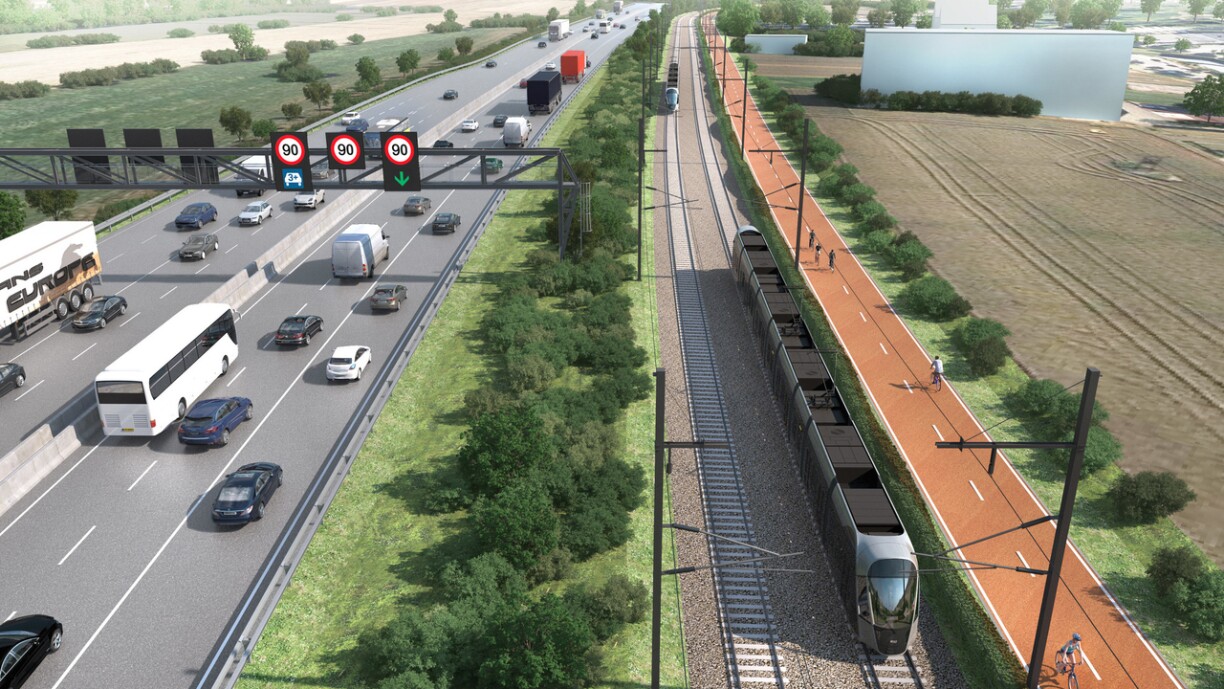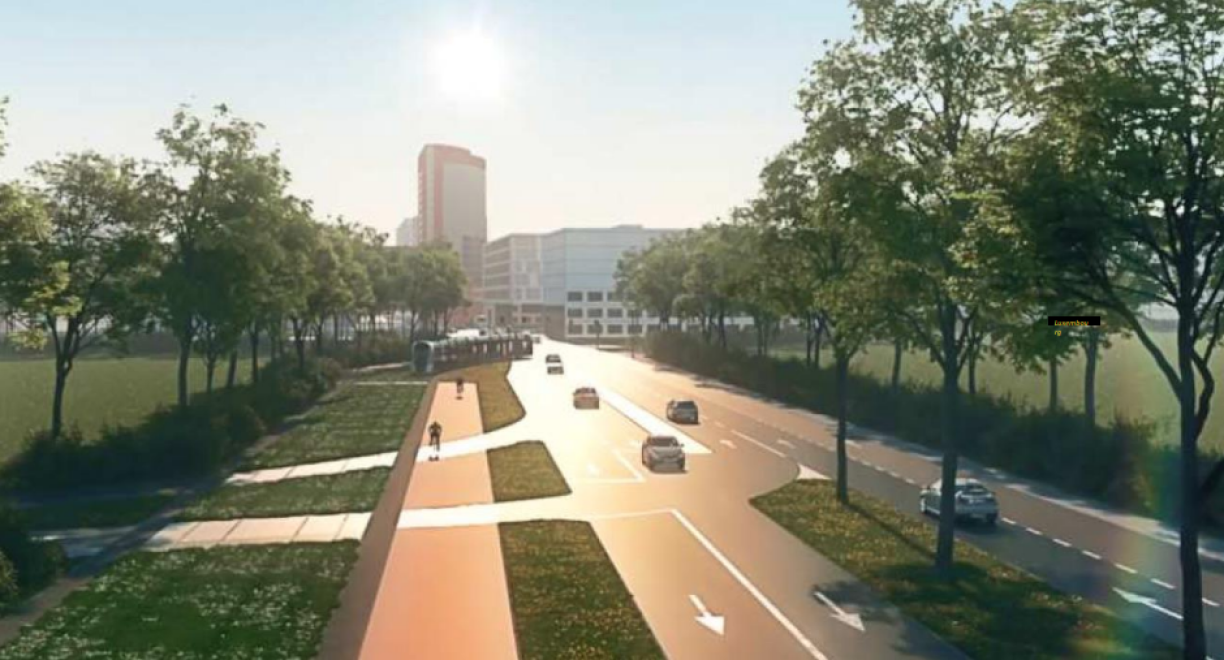
Currently, the urban tram in Luxembourg City has a maximum speed of 70 km/h but operates at a commercial speed of 20 km/h, accounting for station stops. The high-speed tram, however, will operate at a commercial speed 2.5 times faster, reaching speeds of nearly 50 km/h. “Its top speed will range from 85 to 100 km/h,” as explained by André Von der Marck, Luxtram’s Managing Director.
The high-speed tram will notably excel between the “Stadion” station, where it will integrate with the city’s existing tram network, and the stations in Leudelange, Foetz, and Metzeschmelz. Covering a distance of 12.7 km, this segment will enable the tram to maintain a speed of 50 km/h, reducing travel time to approximately 14 minutes.
However, the situation changes as the tram enters the urban setting during the 6 km Esch crossing. Here, the same tram will shift into “urban” mode, extending the journey to Metzeschmelz to 16 minutes and 30 seconds. Consequently, passengers will require a total of 31 minutes to travel from the capital’s football stadium to Belvaux.
In practice, passengers will not perceive any change, as the same driver will operate the entire route, seamlessly transitioning from high-speed to urban tram service.
Luxtram has offered a glimpse of the future by introducing three scenarios that illustrate the real-time savings anticipated with the advent of the rapid tram system, as compared to the current public transport options.
Currently, a student travelling from the University of Luxembourg to Place d’Armes in the centre of Luxembourg City requires 57 minutes, involving both train and tram journeys. By 2035, the same trip is projected to take 60 minutes via the rapid tram.

For passengers commuting from Sudspidol to Place d’Armes, the journey currently takes one hour and 4 minutes, involving a 10-minute walk and successive bus, train, and tram rides. In the future, this route will be streamlined to just 55 minutes, with a 6-minute walk and direct tram service.
Likewise, the trip from Foetz to the Cloche d’Or business park, which currently takes 54 minutes by bus, is expected to be dramatically reduced to 25 minutes with the high-speed tram system by 2030.
According to Luxtram, the new rapid tram is set to be “very beautiful,” featuring meticulous design and increased comfort. With a slightly longer length, ranging from 53 to 55 meters, it will offer twice the seating capacity of the current trams, accommodating up to 150 passengers. The seats themselves will be upgraded for enhanced comfort, “simply because passengers will be sitting a little longer,” as Von der Marck explains. The ambitious multimodal corridor project, requiring €3 billion for completion, allocates nearly one-third of its budget — €960 million excluding taxes — for the financing of the rapid tram. Construction costs for the tram infrastructure and the 18.7 km express cycleway are estimated at €840 million, while the acquisition of 24 rapid tram trains will account for €120 million.
Luxtram’s CEO noted that the number of new rapid tram stops is expected to range from “12 to 15.” The variation is attributed to ongoing discussions regarding “the precise size of the stops in the town of Esch.”
Related